Farm to Table
“We have not lacked any good here; we eat meat every day. We have no black bread here; instead at every meal we make fresh cornbread from the so-called Welsh corn which we have planted in our gardens. The cornbread tastes very good. Every person has a pound of coffee a week.”
– Nicholas and Anton Riedel, May 11, 1845
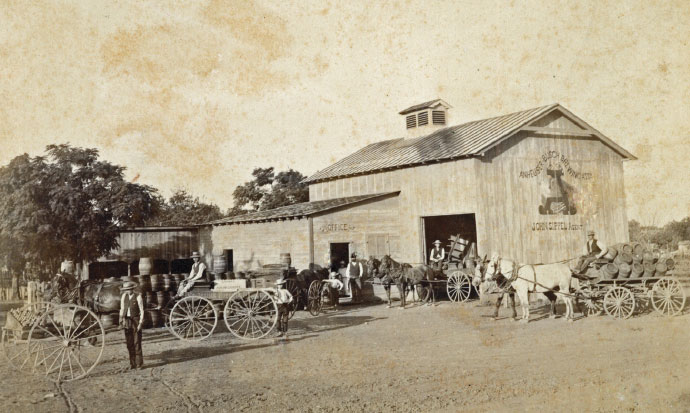
Sippel Beer Company Brewery, circa 1900.
Corn, sweet potatoes, vegetables, fruit, grapes, pecans, grain sorghum, wheat, rye, and oats were in abundant cultivation soon after the founding of New Braunfels. These and other fresh goods were found in markets and kitchen tables throughout the new “burg.” Sauerkraut was put up by the barrel on some German farms, satisfying the desire for a homeland favorite that had been unknown to the southerners here.
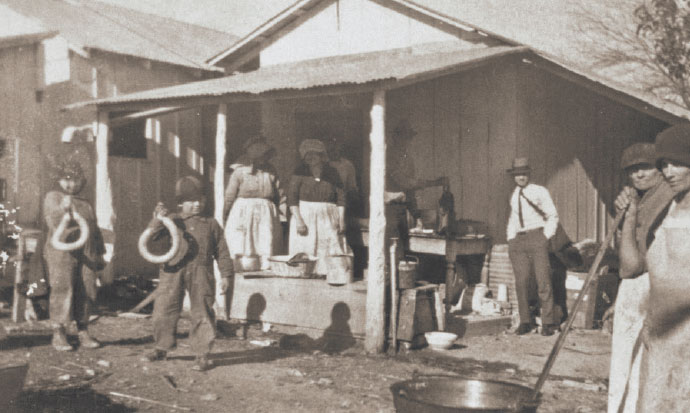
German sausage making, circa 1850.
The large volume of beef and pork production also encouraged the survival of another German art—sausage making. This traditional delicacy was also virtually unknown in Texas until the Germans arrived, but has since become a storied part of the state’s cuisine.
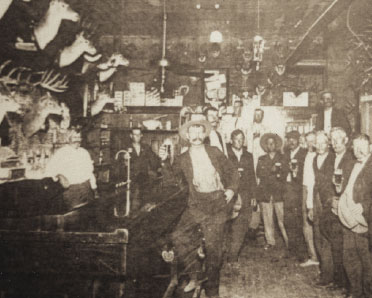
Interior view of Peter Nowotny Saloon, 1918.
Chickens and geese were widely kept for eggs and meat, and by 1850 every German household had acquired a cow. Naturally, milk production and cheese making quickly took root, and soon German specialty cheeses were coveted throughout the region.
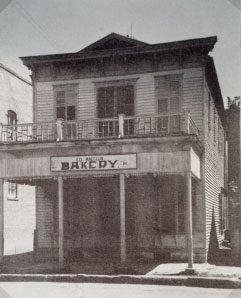
Naegelin’s Bakery, established 1868.
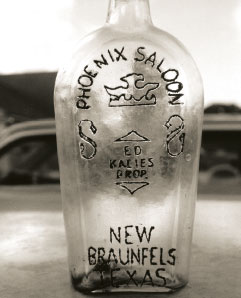
Whiskey bottle from original Phoenix Saloon, 1871.
“The taste for whiskey, which the German peasants and artisans unfortunately bring with them, is stimulated by the warm climate and further encouraged because the people are deprived of many delightful beverages of their native land, particularly good beer and light wine.”
– Dr. Ferdinand von Roemer, 1847
Mustang grapes grew wild in the Hill Country and wine making was a coveted talent. Family wine recipes were prized and initially kept secret. Eventually, families shared their wine, perhaps mostly to add to their community commerce efforts.
The area’s productive farmers, vintners, and food artisans were known for gracious hospitality, pride, and business. The first known restaurant was in a rustic, one-room log house with no door and a dirt floor. A heavy-set woman nicknamed “Dicke Madam” served three meals a day to 10 or 12 customers who sat at one long table.
| 1845 | Arnold Henkel Wedemeyers Tavern – first saloon in New Braunfels |
| 1853 | Weekly farmers markets on Main Plaza |
| 1868 | Naegelin’s Bakery opens – now the oldest bakery in Texas |
| 1871 | Phoenix Saloon opens |
| 1868 | Guenther Brewery, Margarethe Guenther – first female brewmaster |

Valley fruit stand, circa 1940.
